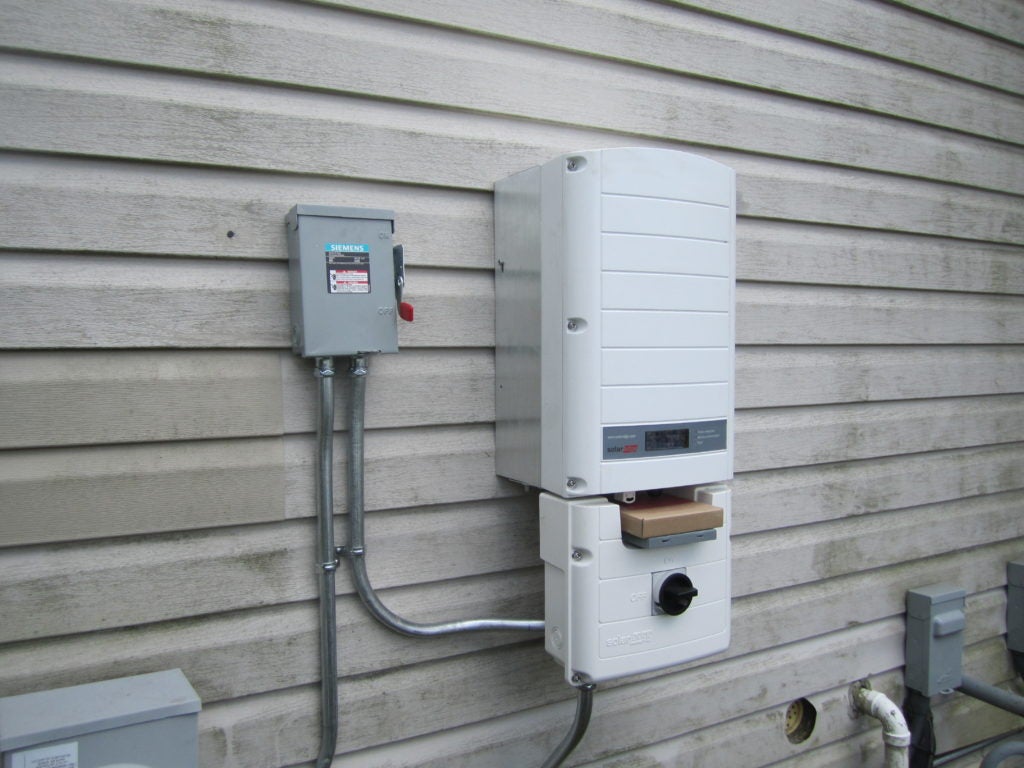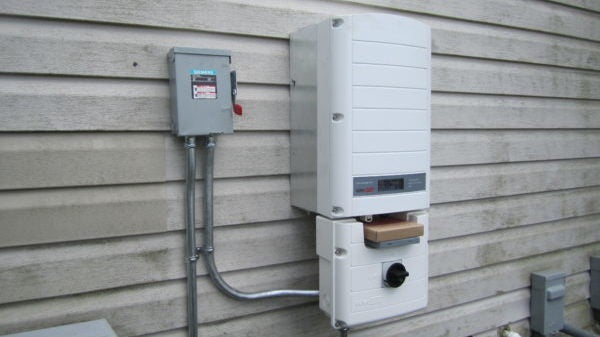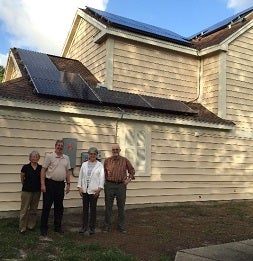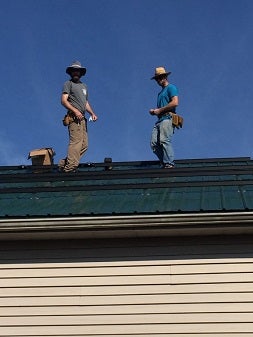Central inverter or micro-inverter: What’s the difference and which one is right for me?


A solar photovoltaic (PV) system is just that, a system. There are several components that are needed to convert the sun’s energy into electricity to help you save money on your electricity bill. One key component in the system is an inverter. Inverters change direct current (DC) electricity produced by your modules into alternating current (AC) so it can be used by your home’s electric devices.
To understand the process, a quick refresher on how solar modules convert sunlight to electricity is necessary. Photons from the sun hit electrons in solar modules. This interaction creates direct current. Your home and appliances use alternating current. So, an inverter is needed to ensure the DC electricity generated by your modules is turned into usable AC by your home.
There are two types of inverters: central (also called string) inverters and micro-inverters. Regardless of type, all modern inverters use a technology called maximum point power tracking (MPPT) to optimize the amount of energy harvested from solar modules. Inverters achieve this by regularly ensuring the modules are producing the optimal combination of voltage and current. This combination fluctuates based on the current conditions on site. Central inverters have one (sometimes two) MPPT controllers. Each micro-inverter has its own MPPT controller.

Central inverters (from companies like SMA, Fronius, ABB and others) receive all of the energy generated by multiple modules and convert it to alternating current in one central location. These inverters are usually located at ground level, near the main electrical service panel with wires connecting to the modules. Central inverters optimize energy conversion for the entire system. Because multiple modules are controlled by one MPPT controller in the inverter, shading or other factors affecting one or more modules bring down the performance of the whole system.
Micro-inverters (from companies like Enphase, SMA, ABB and others) are smaller inverters connected to each module. Each micro-inverter has its own MPPT controller and converts DC into AC electricity at the point of the module itself.
What about AC modules?
So, if one module is shaded, this shading won’t diminish the production of the other modules. Micro-inverters are also optimized for the production of each module and can increase power production by 5% to 25% compared to central inverters. All inverters have online monitoring options that allow for the tracking and monitoring of whole system production and performance.

Micro-inverter monitoring systems give you the option for module-level monitoring as well, showing data on individual module performance. They also make it easier to add more modules once a system has been installed. Micro-inverters do have limitations. Most micro-inverters cannot accommodate high wattage modules (roughly greater than 285 watts). Micro-inverters may also complicate the process of connecting your system to a battery. Compared to central inverters, micro-inverters generally (although not always) come at a higher cost. The decision to opt for micro-inverters should be based upon your system’s lifetime expected performance and your estimation of how much improvement you would see from using a micro-inverter.
What are DC optimizers?
Broadly, if you are using high-quality modules and have a completely unobstructed roof, you may be financially better off with a central inverter. If there are conditions on site like partial shading or multiple roof angles where your modules will be installed, micro-inverters, AC modules or DC optimizers may be a wise investment.
Like any component of your solar system, the ultimate decision on which inverter to choose will be based on your site characteristics, budget and system expectations and goals. A reputable installer will be happy to walk you through the advantages and disadvantages of your inverter options.
